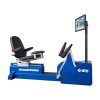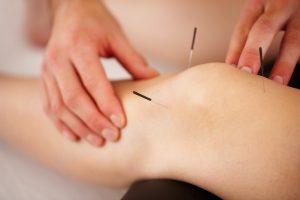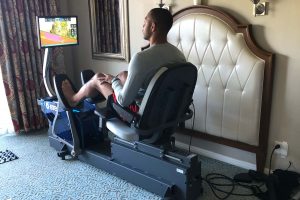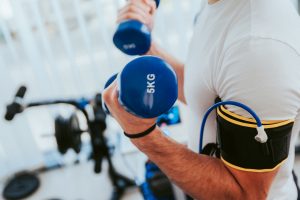
BFR Training: Objective Data for Rehab Success
Treatment GuidelinesElevate your BFR training protocols with objective strength and functional data. Improve patient outcomes, enhance medical necessity, and optimize clinic efficiency.
What Is Blood Flow Restriction (BFR) Training?
Blood Flow Restriction (BFR) training uses a specialized cuff or band to partially restrict blood flow to a limb during exercise. This creates a metabolic environment that stimulates muscle growth and strength—even at low loads. By mimicking the effects of heavy lifting, BFR allows patients to achieve gains with less joint stress.
Clinical Rationale: Hypertrophy at Low Loads, Reduced Joint Stress
BFR training enables hypertrophy and strength increases using just 20–30% of a patient’s one-repetition max (1RM). This is a game-changer for post-op, elderly, or pain-limited patients who can’t tolerate traditional resistance training. The reduced joint load means less aggravation and faster progression.
When to Use BFR in Your Practice
BFR is ideal for early post-surgical rehab, chronic joint pain, and patients with load restrictions. It’s also effective for athletes seeking to maintain or build strength during recovery.
Why Invest in a Dedicated BFR Machine?
Precision and Safety: Automated Pressure Regulation
BFR systems allow the clinician to set exact pressure for each session. This maximizes patient safety during the exercise.
Consistency and Reproducibility for Outcomes Tracking
A BFR machine ensures every session is delivered with the same parameters, making outcomes tracking reliable. This consistency is critical for documentation, reimbursement, and quality care.
Anatomy of a BFR Machine
Pneumatic Cuff & Pump System
Modern BFR machines feature inflatable cuffs that wrap around the limb. A pneumatic pump inflates the cuff to a precise, pre-set pressure.
User Interface: Touchscreen Control, Pre-Set Protocols
Intuitive touchscreens let clinicians select protocols, adjust settings, and monitor progress in real time. Pre-set programs streamline workflow and reduce setup time.
Safety Alarms, Occlusion Pressure Sensors, Auto-Release
Built-in safety features include pressure sensors, alarms, and automatic cuff release to prevent over-occlusion and ensure patient safety.
Clinical Benefits and ROI
Strength & Hypertrophy Gains with ≤30% 1RM
BFR supports muscle growth and strength using low loads, allowing patients to progress faster—even when heavy lifting isn’t possible.
Increased Strength and Function in Osteoarthritic Patients
Studies show BFR enhanced muscle strength, reduced pain, improved daily functions in patients with knee osteoarthritis, compared to weight training without BFR.1
Revenue Opportunities: New Service Lines, CPT 96920 Reimbursement
BFR opens new revenue streams and is reimbursable under CPT 96920. Clinics can expand their reach and improve revenue by offering BFR training as a new service.
Protocol Design: Best Practices for Your BFR Machine
Assessing Limb Occlusion Pressure (LOP)
Always determine the individual’s LOP using the machine’s built-in sensors. This personalizes treatment and maximizes safety.
Resistance Training Protocols (30-15-15-15, 40%–80% AOP)
Common protocols include 30-15-15-15 reps per set at 40–80% of arterial occlusion pressure (AOP). Adjust based on patient tolerance and goals.
Aerobic BFR (Walking/Cycling at <50% VO2 Max)
BFR can be combined with low-intensity aerobic exercise, such as walking or cycling, to promote cardiovascular and muscular adaptations.
Passive BFR for Immobilization (5-Min Inflate/3-Min Reperfusion)
For immobilized patients, passive BFR (5 minutes inflated, 3 minutes reperfusion) can help maintain muscle mass during inactivity.
Monitoring, Rest Intervals, and Session Duration
Monitor vitals and limb sensation throughout. Use short rest intervals (30–60 seconds) and keep total session duration within evidence-based guidelines.
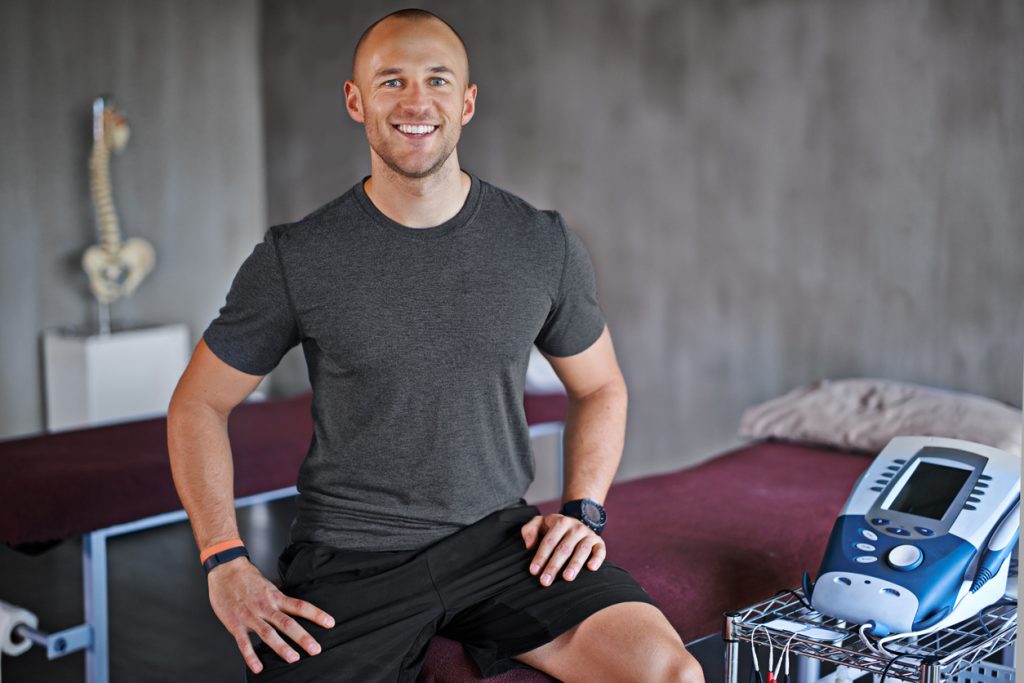
Safety, Screening, and Contraindications
Pre-Treatment Health History & Vital Signs
Screen all patients for cardiovascular risk, clotting disorders, and other contraindications. Baseline vitals are essential.
Absolute Contraindications
Do not use BFR with patients who have a history of DVT, active infection, uncontrolled hypertension, or are pregnant.
Transient Side Effects: Numbness, Petechiae, DOMS
Some patients may experience mild numbness, petechiae (small dots under the skin), or delayed onset muscle soreness (DOMS). These are typically temporary.
Documentation for Medical Necessity and Audit Defense
Document indications, protocols, patient response, and safety checks. This supports medical necessity and protects against payer audits.
Integration into Clinic Workflow
Staff Training, Certification, and Competency Checks
Ensure all staff are trained and, if required, certified in BFR protocols. Regular competency checks maintain high standards.
Patient Onboarding: Education, Consent, Home-Use vs. In-Clinic
Educate patients on BFR’s purpose, benefits, and risks. Obtain informed consent and clarify in-clinic protocols.
EMR Workflow: Order Entry, Progress Notes, Outcome Reporting
Integrate BFR into your EMR for streamlined order entry, progress tracking, and outcome documentation.
Billing & Coding: CPT 96920, Modifiers, Payer Guidelines
Bill BFR services under CPT 96920. Use appropriate modifiers and follow payer-specific guidelines for optimal reimbursement.
Case Studies & Evidence
Post-ACL Reconstruction: Strength and CSA Improvements
BFR has been shown to accelerates quadriceps strength recovery after ACL reconstruction, supporting athletes’ return to sport.2
Bone Health and Geriatric Rehab
In older adults, BFR has been shown to improve bone health. Older adults who are unable to perform high-intensity training can still get comparable benefits with low-intensity exercise using BFR.3
Knee Osteoarthritis: Functional Gains, Pain Reduction
Patients with knee OA benefit from improved function and reduced pain, even when high-load exercise isn’t feasible.1
How to Choose the Right BFR Machine for Your Facility
Scalability: Single-Room vs. Multi-Site Deployment
Select a system that fits your clinic size—whether you need a single unit or scalable solutions for multi-site operations.
User Management & SSO Integration
Look for user management features and single sign-on (SSO) integration to streamline staff access and security.
Data Security & HIPAA Compliance
Ensure your BFR machine meets HIPAA standards and protects patient data at every step.
Service, Training, and Ongoing Support
Choose a vendor that offers comprehensive training, responsive service, and ongoing support to maximize your investment.
Frequently Asked Questions (FAQ)
What is the ideal pressure setting for arms vs. legs?
Arm protocols typically use 40–50% of LOP; legs use 60–80%. Always individualize based on patient assessment.
Is certification required to operate a BFR machine?
Certification is recommended and may be required by your facility or state.
How do I document BFR treatments for reimbursement?
Include medical necessity, protocol details, patient response, and safety checks in your notes. Use CPT 96920 and payer-specific documentation requirements.
Can BFR be combined with NMES or vibration?
Yes, BFR can be safely combined with modalities like NMES or vibration, depending on patient goals and tolerance.
How many BFR sessions per week are recommended?
Most protocols use 2–3 BFR sessions weekly per limb, allowing at least 48 hours between treatments. Adjust frequency based on surgical recovery recommendations, tissue tolerance, and your clinical judgment.
Do BFR cuffs require routine calibration or maintenance?
Yes. Follow the manufacturer’s quarterly calibration check and inspect cuffs for leaks or wear before each use to ensure accurate pressure delivery and patient safety.
Can CPT 96920 be billed on the same date as therapeutic exercise (97110)?
Generally, yes—if documentation supports distinct, medically necessary services. Use appropriate modifiers and verify payer-specific bundling rules beforehand.
What sensations should patients expect during a correctly applied BFR session?
Patients typically feel moderate pressure and muscle fatigue, not sharp pain or numbness. Discontinue immediately if severe discomfort, tingling, or color changes occur.
References
- Hu, C., Zhu, B., Wang, Y., Yang, F., Zhang, J., Zhong, W., Lu, S., & Luo, C. Effectiveness of blood flow restriction versus traditional weight-bearing training in rehabilitation of knee osteoarthritis patients with MASLD: A multicenter randomized controlled trial. (2023, December 13). Frontiers. https://www.frontiersin.org/journals/endocrinology/articles/10.3389/fendo.2023.1220758/full
- Humes C, Aguero S, Chahla J, Foad A. Blood Flow Restriction and Its Function in Post-Operative Anterior Cruciate Ligament Reconstruction Therapy: Expert Opinion. Arch Bone Jt Surg. 2020 Sep;8(5):570-574. doi: 10.22038/abjs.2020.42068.2145. PMID: 33088857; PMCID: PMC7547166.
- Liu, Y., Zhang, Y., Wang, T. et al.Systematic review and meta-analysis of the effects of blood flow restriction training on bone health in older adults. Sci Rep 15, 12800 (2025). https://doi.org/10.1038/s41598-025-98053-5


